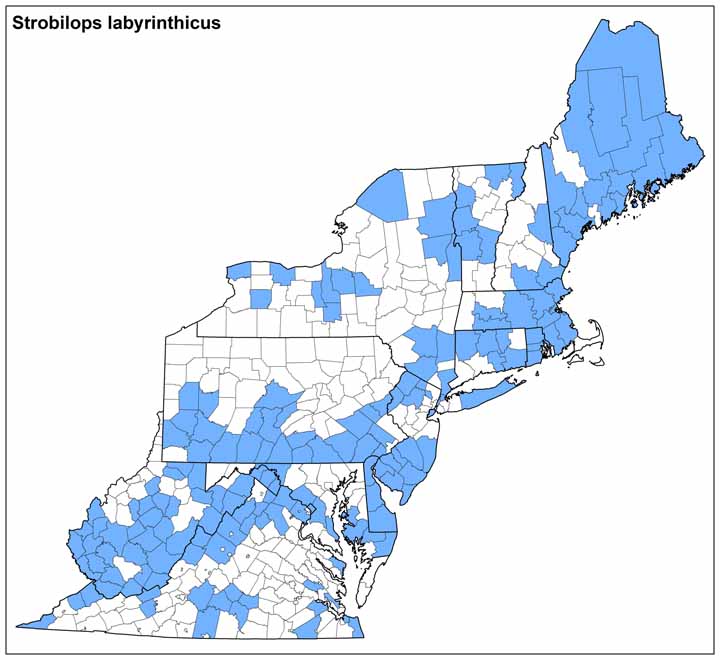Land Snails
.jpg)
Photo(s): Strobilops labyrinthicus shell © Larry Watrous.
Click photo(s) to enlarge.
Strobilops labyrinthicus (Say, 1817)
Family: Strobilopsidae
Common name: Maze Pinecone
Identification
Width: 2.3 mm
Height: 1.8 mm
Whorls: 6
The apex of this species’ shell is rounded and the base flattened, making it less angular than S. aeneus. The finer rib pattern of this animal’s shell becomes quite faint on the underside, and it is very narrowly umbilicate. The half-circle peristome of the aperture is surrounded by a thick reflected lip, and there is a lamella on the top part inside. The upper parts of the animal are dark gray.
Ecology
Strobilops labryrinthicus is found upon old logs, at the base of trees, and in leaf litter. In northern Maine this animal is very much a habitat generalist, found at a wide variety of forest sites (Nekola, 2008).
Taxonomy
Synonyms for S. labyrinthicus are: Helix labyrinthica, Strobila laborinthica, Strobila labyrinthica var. virgo, and Strobilops labyrinthica.
Distribution
This range of this snail extends over most of the eastern half of the US and southern Canada, west to Manitoba and south to Arkansas, Georgia and Alabama (Hubricht, 1985). It is absent from the Southeast Coast and Florida. Interestingly, there are some significant intervals within its range where it is uncommon or absent, such as the Adirondack Mountains of New York (e.g. Beier et al, 2012). In Virginia it is most concentrated in the central part of the state, but has been found in the western part of the state as well.
NatureServe Global Rank: G5
NatureServe State Rank: S4
Ken Hotopp, Greg Kimber 11/2012
Range Map (click to enlarge)


